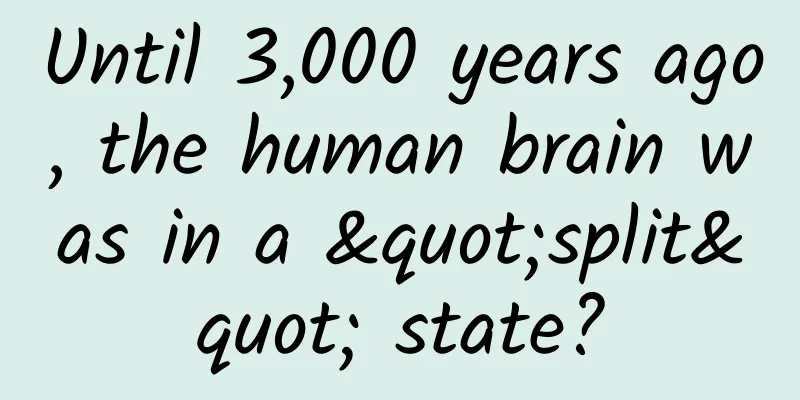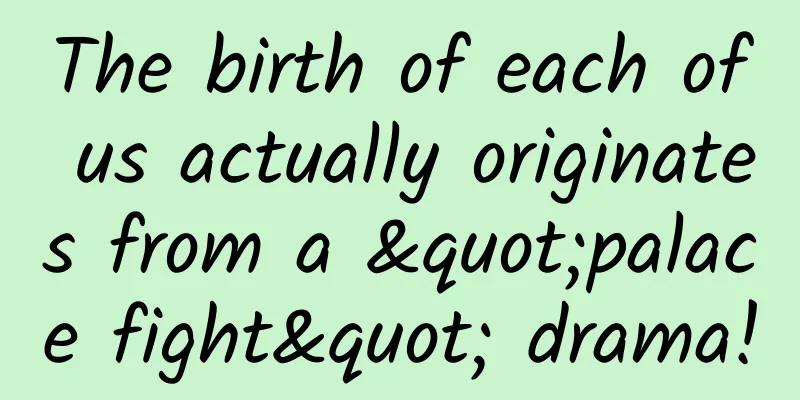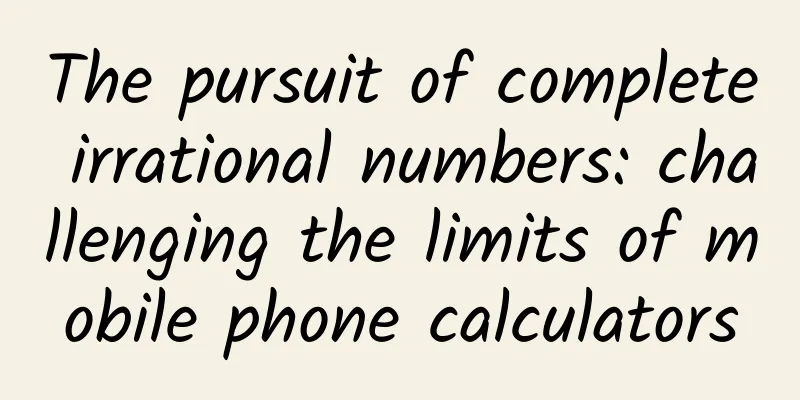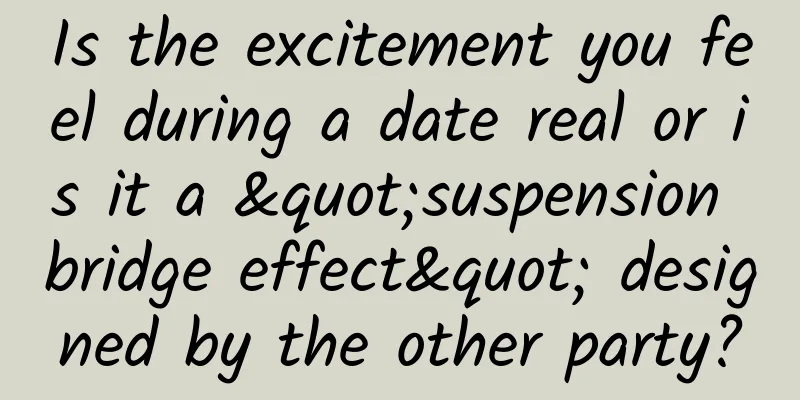Until 3,000 years ago, the human brain was in a "split" state?

|
Leviathan Press: The "two-mind hypothesis" mentioned in the article is very interesting. According to Julian Jaynes, the human brain has been in this split state until 3,000 years ago. The way they experience the outside world is not so much that they can consciously make assessments when encountering novel or unexpected situations, but rather they will have auditory hallucinations, or imagine that "God" gives advice or orders, and then unconditionally obey these hallucinations. In other words, they are not aware of their own thought processes at all. This "command hallucination" often commands patients with the main symptoms of schizophrenia, and Jaynes' hypothesis provides a possible explanation for this "command hallucination." After analyzing the Iliad and the Old Testament, Jaynes believes that there is no mention of any cognitive process (such as introspection) in them, and there is no obvious sign that the author has self-awareness. He therefore believes that the mental state of early humans is very different from ours. He also pointed out that schizophrenia, as mentioned in modern psychopathology, is a remnant of the early dualistic mind of mankind (of course, this is also where he has been criticized a lot). Quick quiz: Are you right-brained or left-brained? You'll probably be able to answer this question pretty quickly. If you're a creative and intuitive person who enjoys music, images, and other forms of art, you're right-brained. On the other hand, if you're more analytical and logical, and enjoy math and pattern recognition, you're left-brained. If you don't know which you are yet, there are countless online tests to help you identify, strengthen, and maximize your inherent cognitive strengths. In fact, the left-right brain theory has permeated all kinds of industries—particularly business, with many companies hiring right-brained employees for more creative roles and left-brained employees for management positions. Given its widespread acceptance and use, the theory must be based on the latest neuroscience, right? Sorry, that’s not true. Like the idea that we only use 10% of our brains, the left-brain/right-brain theory is also a persistent pop psychology myth—just as many personality tests, including the famous Myers-Briggs, have predictive power that’s not much different from astrology. Like many modern science myths, though, the left-right brain dichotomy is based on a kernel of truth. Certain brain functions are indeed concentrated in different hemispheres, but this lateralization (the phenomenon of functions being distributed across the hemispheres) is much more complicated than the simple models presented by pop psychology. So how much of this modern myth is true, and how much is completely made up? © Wikimedia Commons From the outside, the brain appears to be perfectly symmetrical. At the bottom is the hindbrain, which is made up of two structures: the brainstem, which controls autonomic functions such as breathing and digestion, and the limbic system, which controls more complex basic functions such as memory processing, emotions, and motivation. Below the hindbrain is the cerebellum, which is responsible for sensory processing and motor coordination, and surrounding it is the forebrain, which is responsible for higher cognitive functions. The brain is divided into two hemispheres along the midline, and each hemisphere is further divided into four lobes: frontal, parietal, temporal, and occipital. The cerebellum is also divided into two symmetrical hemispheres, while the cerebral hemispheres are connected to each other by a bundle of nerve fibers called the corpus callosum. However, as early as the 1860s, evidence began to suggest that the brain was not as symmetrical as it seemed. In 1861, French physician and anatomist Paul Broca encountered two patients with significant speech impairments. The first patient, Louis Victor Leborgne, had almost completely lost the ability to speak, uttering only a single word: “temps” [pronounced “tan” or “tahn”]—French for “time.” Curiously, his other cognitive abilities—including the ability to read, write, and understand spoken language—were not impaired. Leborgne's brain, deposited by Broca at the Dupuytren museum in Paris. © Neurosciences and History A second patient, Lazare Lelong, had a similar disorder, and could only say five words: “yes,” “no,” “three,” “always,” and “lelo”—a mispronunciation of his last name. Broca performed autopsies on both patients’ brains after their deaths and found that both had suffered from neurosyphilis , which had caused damage to the same area of their brains: the third gyrus in the left frontal lobe. These findings led Broca to publish a landmark paper in 1865, “Localization of Speech in the Third Left Frontal Cultivation,”[1] in which he hypothesized that speech production was concentrated in this region, now known as Broca’s Area. A decade later, in 1874, the German physician and anatomist Karl Wernicke described a similar but distinct form of aphasia in which patients were able to speak fluently but produced sentences that lacked structure and meaning—what is today known as “word salad.” Strangely, these sentences retained the rhythm and syntax of normal speech, and patients were completely unaware that their speech was in any way disordered. Their ability to comprehend language, both spoken and written, was also typically impaired. Like Broca, Wernicke discovered that the impairment was caused by damage to a specific area of the brain: an area located in the left posterior frontal lobe, now known as Wernicke's area. These observations led Wernicke to classify aphasia into two basic types: Broca's, or motor aphasia , and Wernicke's receptive aphasia . Broca's and Wernicke's findings led psychologists to conclude that language production and comprehension were entirely localized to the left hemisphere of the brain. However, it was not until the 1960s that the extent of brain lateralization began to be truly understood. In the early 1960s, neurosurgeons began performing a radical new surgery to help patients with severe epilepsy. Called a corpus callosotomy , the procedure involved severing the nerve fibers in the corpus callosum to prevent epileptic signals from traveling from one hemisphere to the other. Initially, it was thought that the surgery had no side effects, but as patients were observed over time, their behavior became increasingly strange. They began to prefer using the right side of their bodies when performing everyday tasks and seemed completely unaware of any stimulation on the left side. For example, if something touched their left arm, they would not notice, and if an object was placed in their left hand, they would deny its presence. Roger Sperry (1913-1994). © The Pontifical Academy of Sciences Intrigued by this strange behavior, in 1962 Caltech neurophysiologist Roger Sperry and his graduate student Michael Gazzaniga began a series of groundbreaking experiments to try to figure out what was going on in these split-brain patients. Their findings revolutionized our understanding of the human brain. Although the corpus callosum was previously thought to be a minor structure, with psychologist Karl Lashley even speculating that it served no more than to "keep the hemispheres from sagging," Sperry and Gazzaniga soon discovered the important role it played in brain function. Due to a quirk of vertebrate evolution, our nervous systems are cross-controlled, meaning that each hemisphere receives information primarily from the other side of the body. For example, the optic nerves carry visual information from the eyes to our occipital lobes, and these nerves cross at the optic chiasm, meaning that information from the right eye goes to the left hemisphere and vice versa. Likewise, each hemisphere controls the opposite side of the body, so a stroke in the left hemisphere, for example, can result in paralysis on the right side of the body, and vice versa. Normally, this seemingly counterintuitive arrangement works well because information is immediately passed through the corpus callosum to the correct hemisphere. But in split-brain patients, this communication channel no longer exists, meaning that information sent to a specific hemisphere stays in that hemisphere. Here’s where things get weird. Sperry and Gazzaniga probed patients’ hemispheric function separately by stimulating the opposite side of the body—for example, by presenting an image to the right eye to stimulate the left hemisphere. In one early experiment [2], they flashed a series of lights in a patient’s field of vision. When asked to report when they saw the lights, the patients only reported the lights on the right side. But when asked to indicate when they saw the lights, they successfully reported the lights on both sides. © Knowing Neurons Next, Sperry and Gazzaniga projected the word "HEART" so that the letters "HE" appeared in the patients' left visual field and the letters "ART" appeared in the right visual field. When asked to report what they saw, the patients verbally responded "ART", but when asked to point to the word they saw with their left hand, they pointed to "HE". Similarly, if an object was placed in the patient's right hand, they could easily name it, but when asked to point to an image of the same object with their right hand, they were unable to do so. When the side was reversed, patients could easily point to objects but, to their confusion, could not name them. These experiments confirmed that language processing was almost entirely confined to the left hemisphere, while the right hemisphere specialized in visual perception tasks, such as recognizing faces and emotions and detecting differences between objects. While these differences are puzzling enough, the experiences of patients living in a "split-brain" state are sometimes even more bizarre, with patients feeling that they actually have two separate brains - which often conflict with each other. For example, patients have reported buttoning their clothes with one hand while spontaneously unbuttoning them with the other, or placing items in a shopping cart with one hand while returning them to the shelf with the other. Many patients are even able to draw two different images simultaneously with both hands, although the left hand usually outperforms the right hand in this task due to the right hemisphere's strengths in spatial reasoning. Alien Hand Syndrome in "Dr. Strangelove": The left and right brains fight each other, and the left hand can't control the right hand to make a Nazi salute. © Pinterest In rare cases, the phenomenon can even manifest as "Alien hand syndrome," in which one of the patient's hands seems to have a will of its own, sometimes even trying to strangle the patient or others. This phenomenon is also sometimes called "Dr. Strangelove Syndrome," named after the character Peter Sellers in Stanley Kubrick's 1964 film, who exhibits similar symptoms. Unfortunately, there is no cure for the condition, other than keeping the "disorderly hand" busy with other tasks or limiting its activity at night to prevent damage. Sperry summarized his findings in a seminal 1974 paper that ultimately won him the 1981 Nobel Prize in Physiology or Medicine. He concluded: “…[each hemisphere] is truly a separate conscious system that operates at a distinctively human level in terms of perception, thought, memory, reasoning, willing, and emotion…The left and right hemispheres can simultaneously be conscious of different, even contradictory, psychological experiences that proceed in parallel.” In particular, Sperry concluded that the left hemisphere specializes in logic, sequencing, linear thinking, mathematics, hard facts, and literal thinking. In contrast, the right hemisphere handles "soft" tasks such as imagination, holistic thinking, intuition, visual-spatial processing, facial recognition, and interpreting nonverbal social cues. In fact, according to Sperry's experiments, this lateralization of mathematical thinking is almost complete: “…mathematical testing of the subhemispheric area by nonverbal output and by limiting sensory input to the left visual field or left hand showed that…subhemispheric computational ability was negligible. By manipulating marbles or sticks, observing flashing lights in the left visual field, and indicating with the left hand…[split-brain] patients could successfully match numbers or add a digit to a number less than 10, but they failed when asked to add or subtract two or more numbers and in the simplest operations of multiplication and division.” Later, Sperry observed that the right hemisphere could actually perform addition operations smaller than 20—the only exception to the left hemisphere’s complete dominance over mathematical thinking. © Vinmec Subsequent observations seemed to confirm Sperry's findings, and neurologists concluded that primary acalculia , the inability to understand and perform mathematical operations, occurs only when the left parietal lobe of the brain is damaged.[3] In contrast, secondary acalculia, caused by damage to the right hemisphere, affects the brain's ability to receive mathematical information through the senses or to express it through language, but does not affect the brain's basic ability to understand and process this information. Less invasive studies have further confirmed the brain's task lateralization. In 1973, Dr. Robert Ornstein and Dr. David Galin of the Langley Porter Neuropsychiatric Institute in San Francisco asked subjects to perform various cognitive tasks while an electroencephalogram (EEG) monitored activity in each hemisphere.[4] When asked to do mental arithmetic, think about writing a letter, or perform language exercises (such as listing verbs beginning with the letter R), the subjects’ left hemisphere produced fast brain waves that indicate attention and activity, while their right hemisphere produced low-frequency alpha waves that indicate relaxation, suggesting that the right hemisphere was essentially shut down during these tasks. However, when the subjects were asked to complete a puzzle with colored blocks, remember the sequence of musical notes, or draw a picture using a sketchpad, the opposite was true, with the right hemisphere producing fast brain waves and the left hemisphere producing alpha waves. Ornstein and Galin concluded: "Our view is that in most everyday activities we simply alternate between different cognitive modes, rather than integrating them together. These modes complement each other, but they cannot replace each other." However, despite Sperry's warning: “… the idea of an experimental polarity of right-left cognitive styles is very easy to generalize. ” …but it was too late. In a 1973 article in The New York Times Magazine discussing Ornstein and Galin’s experiments[5], the two scientists suggested that different people’s talents and abilities are shaped by which side of their hemisphere is dominant: "Ideally, we should be able to activate the right hemisphere and shut down the other hemisphere depending on the task. But in reality we can't always do that. 'Many people are dominated by one mode or the other,' Dr. Ornstein points out. 'They either have difficulty with crafts and physical movements or they have difficulty processing language.' Culture obviously has a big influence on this. Children from poor black communities often use their right hemisphere more - they score higher than white people on pattern recognition tests of incomplete figures, for example, but perform poorly on language tasks. Other children who have learned to verbalize everything find this approach a hindrance when it comes to imitating a tennis serve or learning dance steps. Analyzing these movements with words only slows them down and interferes with direct learning through the right hemisphere." “We don’t have the flexibility we should have,” Ornstein says. “We imagine we have more control than we actually do.” Early in life, many people seem to be molded into being either “left-hemisphere types,” who operate primarily in a verbal world, or “right-hemisphere types,” who rely more on nonverbal expressions. These are two fundamentally different ways of looking at the world.” The article further states: "Drs. Ornstein and Garin believe that when habitual use of the same side of the brain becomes too pronounced, it can limit a person's personality. The two researchers are currently working on a test that might help them determine which side of the brain a person has a chronic preference for, and whether this habit prevents them from shifting dominance to the other side when necessary. They plan to test it on people who are truly specialized, such as Ralph Nader (a left-hemisphere type with no hobbies or interests), and on right-brain dominant ceramicists, dancers and sculptors ('preferably those who have difficulty with language'). They expect to find significant differences between the two groups. This will give them a tool to guide children or adults to discover new aspects of themselves and open them up to experience." Thus, a persistent pop psychology myth was born, and publications including Time magazine, Harvard Business Review, and Psychology Today soon joined the “left brain/right brain” bandwagon. The theory was further popularized by Betty Edwards’s 1979 book Drawing on the Right Side of the Brain, in which the author proposed various techniques to help people bypass the “analytical” left side of the brain and allow visual creativity to flourish. Today, the left brain/right brain theory has spawned a plethora of online tests, seminars, and other materials designed to help people determine which side of the brain is dominant, maximize their potential, and even strengthen the non-dominant side of the brain. The idea has even seeped into the business world, with some companies trying to hire right-brained employees for more creative roles and left-brained employees for management positions. But as is often the case when studying the human mind, things are far from as simple as pop psychology would have us believe. © Cornell University Although the findings of Sperry, Ornstein and others seemed to indicate that the right hemisphere played little role in mathematical thinking and language processing, this was not actually the case. Sperry observed that the right hemisphere also played an active role in so-called left-brain tasks. For example, when a patient saw a picture of his girlfriend through his left eye, although he could not say her name, he was able to spell her name using Scrabble letters. They also found that although the left brain excels at direct word association, the right brain performs better in recognizing more subtle relationships and cues. For example, when the left brain sees the word "foot," it's better at picking out related words like "heel" from a list of words. But when the right brain sees two additional words, "cry" and "glass," it's more likely to pick out the connecting word — in this case, "cut." The right brain also plays a bigger role in mathematical thinking than expected. Kara Federmeier, a psychology professor at the University of Illinois, explains: "To answer this question, first we have to agree on what we mean by 'logic' and 'creativity'. So let's consider a (relatively) more clear-cut example: mathematical ability, which is often thought of as the 'logical' left brain part. There are many different kinds of maths ability, from being able to estimate which of two sets has more items, to counting, to various types of calculations. Research suggests that, in general, maths ability is shaped by processing in both hemispheres (specifically an area of the brain in each hemisphere called the intraparietal sulcus), and that damage to either hemisphere leads to difficulties with maths ability. The left-brain advantage in maths is mainly seen in tasks like counting and memorising multiplication tables, which rely heavily on memorised verbal information (so not exactly what we normally think of as 'logical'!). There are also some maths-related tasks where the right brain has an advantage, particularly when estimating the number of objects. This pattern, with both sides of the brain making key contributions to most cognitive skills, is universal. To be logical or creative requires both hemispheres to work together.” Indeed, according to popular belief in the left-brain/right-brain division of labor, we would expect those with right-brain damage to be cold and emotionless, but hyper-rational calculation and decision-making machines, like the Vulcans in Star Trek. In reality, however, these people have difficulty making even basic decisions or plans because they lack the intuitive and emotional functions to envision the big picture and translate logic into practical action. Logic and emotion are not as opposed to each other as is often believed; both are necessary to function effectively in the real world. Recent research[6] suggests that many cognitive functions are actually equally divided between the two hemispheres, including processing visual and auditory stimuli, spatial manipulation, facial recognition, artistic abilities, numerical estimation, and comparison. Even the left-lateralization of core language abilities identified by Broca, Wernicke, and others is not always correct. For example, while Broca’s and Wernicke’s areas are typically located in the left hemisphere, they are located in the right hemisphere in 5% of right-handed people and 30% of left-handed people (remember, their dominant hand is controlled by the other hemisphere)[7]. In fact, the lateralization of different cognitive functions varies so much between individuals that neurosurgeons often perform special tests to pinpoint these cognitive locations before invasive brain surgeries such as tumor removal. This test is called intracarotid sodium pentobarbital or the Wada-Milner test[8] and involves injecting a barbiturate sedative into one hemisphere or the other to inactivate it and asking the patient to perform various cognitive tasks. William's brain developed abnormally in the womb. After he was born on July 12, 2005, he suffered up to 80 seizures and convulsions a day, and his parents decided to undergo a radical hemispherectomy. Before the surgery, doctors warned him that the operation might make him unable to walk. But eight years later, the fourth grader can not only run, but also shoot and score. © Indianapolis Monthly Nor does the common notion of brain lateralization explain the phenomenon of “neuroplasticity”—the brain’s amazing ability to adapt to physical injury. Children who have had an entire hemisphere removed due to cancer or other illnesses are able to lead completely normal lives, with the brain reorganizing to use the remaining hemisphere to perform all necessary functions.[9] This kind of neuroplasticity has also been observed, albeit to a lesser degree, in adults who have undergone similar surgeries or suffered traumatic brain injuries. OK, so the brain is far more complex than pop culture would have us believe, and its functions are more evenly distributed than we might expect. But surely different people would prefer to use one side of their brain more than the other? After all, how do you explain why some people are more logical and analytical, while others are more creative and artistic? Unfortunately, science doesn’t support this idea. In 2013, a study by Jared Nielsen and colleagues at the University of Utah[10] analyzed the neural activity of 1,011 individuals aged 7 to 29 as they performed a variety of cognitive tasks using a resting-state functional connectivity magnetic resonance imaging (RS-FCM-MRI) device. The study found that: “Nine left-lateralized and 11 right-lateralized hubs were identified…[as] significantly lateralized connections. Left-lateralized hubs included regions in the default mode network…while right-lateralized hubs included regions in the attention control network…left-lateralized and right-lateralized hubs formed two separable sets of mutually lateralized regional networks. Connections involving only left-lateralized or only right-lateralized hubs showed positive correlations across subjects, but only for connections with shared nodes. Lateralization of brain connectivity appears to be a local rather than global brain network property, and our data are inconsistent with global brain phenotypes of more ‘left-brained’ or more ‘right-brained’ network strength across individuals. There was a small increase in lateralization with age, but no sex differences were observed…[We also found] that lateralized connections across individuals were independent of each other, and most functional lateralization occurred before the age of 7 years.” In other words, while the localization of various cognitive functions varies between individuals, overall no one hemisphere dominates to a significant degree. In fact, many skills and talents come not from more work by one hemisphere but from more efficient collaboration between the two hemispheres. For example, children who are considered gifted in math or music often show better communication between the two hemispheres, allowing them to more effectively combine logical/analytical and creative/intuitive abilities. Conversely, those who struggle with certain tasks are not necessarily because one hemisphere is weaker but often because one hemisphere has developed to perform tasks normally handled by the other hemisphere. As with nearly all cognitive tasks, even the weakest skills can be gradually strengthened with practice. --- Despite more than 50 years of research disproving this idea, an estimated 68% of people still believe in the left-brain/right-brain myth. Why is that? The answer is simple: because we humans like to think about ourselves, and come up with all sorts of systems to divide ourselves and others into neat categories. Tests used to determine left- or right-brain dominance, like horoscopes and many personality tests, exploit a psychological phenomenon known as the Barnum effect —the tendency for people to believe descriptions that appear to be tailored specifically for them, when in fact they are vague enough to apply to anyone. This effect is often exploited by astrologers, psychics, and other scammers, the most famous example being stage magician and paranormal debunker James Randi, who gave a group of students personalized horoscopes and asked them to rate the accuracy of the descriptions. Almost without exception, the students rated the horoscopes as highly accurate. Randi then asked the students to swap horoscopes, at which point they discovered that they had actually received the same one! © Sam Brinson The left-brain/right-brain fallacy validates and provides a seemingly plausible explanation for our daily observations that some people seem to be more logical and analytical, while others are more creative and intuitive. It also allows us to make excuses for our own shortcomings: It’s not my fault that I’m bad at math, you see, I’m naturally right-brained! But in reality, our cognitive skills are influenced by a variety of factors, including genes, upbringing, mindset, and training and education - none of which can be simply attributed to "right-brained" or "left-brained." Although the lateralization of cognitive function may not have a significant impact on our personality or innate skills, it still has a profound impact on the way the brain works. For example, although the information received and processed by each hemisphere is usually shared with the other hemisphere via the corpus callosum, this sharing is not always possible. As psychologist La Federme explains: “Processing within each hemisphere relies on a rich, dense network of connections. The corpus callosum that connects the two hemispheres is large for fiber bundles, but it is very small compared to the network of connections within each hemisphere. Therefore, it does not seem physically feasible for the two hemispheres to fully share information or to operate in a completely unified way. And, in many cases, it is actually smarter to have each hemisphere operate independently. It seems to be a good strategy for the brain to separate the tasks and allow the two hemispheres to work independently and process the same problem in different ways. One of my favorite findings came from an experiment where we used adjectives to change the meaning of the same noun. For example, the word 'green book' refers to a concrete thing - that is, something that is easy to visualize in the mind. However, when given 'interesting book', people often think of the content of the book rather than its physical form, so the same word becomes more 'abstract'. We wanted to see if concreteness differences would emerge for exactly the same words, and whether both hemispheres were equally affected by concreteness. In this experiment, we found that… the left hemisphere was very sensitive to the predictability of word combinations. There were far fewer nouns that could go with ‘green’ than with ‘interesting’, and brain activity reflected this when these words were presented to the left hemisphere first. However, to our surprise, the right brain showed more image-related brain activity in response to the ‘green book’ compared to the ‘interesting book’. So while the left brain is clearly very important in language processing, the right brain may play a special role in creating the rich sensory experience that accompanies language comprehension … and what makes reading so pleasurable.” In other words, even if our corpus callosum is intact, sometimes the brain can still behave as if it were two separate entities - just like Sperry's split-brain patients. Even stranger, until relatively recently in human history, this state of having 'two minds' may have been literal. The Collapse of the Bipartite Mind and the Origins of Consciousness is said to be one of David Bowie's favorite books. © The Bowie Book Club In his 1976 book, The Origin of Consciousness in the Breakdown of the Bicameral Mind, Yale psychologist Julian Jaynes proposed that the normal human mind existed as a "bicameral mind" in the pre-Bronze Age of the Mediterranean, about 3,000 years ago. The two hemispheres operated as independent entities, with the "dominant" left brain generating ideas and communicating them to the "slave" right brain, which obeyed and executed these instructions. © Science | HowStuffWorks According to Jaynes, this bifurcated mind explains the ancient human tendency to attribute thoughts and inspirations to the Muses or gods. Since they were unable to recognize that these thoughts were coming from within their own brains, they would experience these thoughts as auditory hallucinations and attribute their origin to an external, often supernatural source. This experience is similar to that of people with schizophrenia, who experience internally generated thoughts as auditory hallucinations. Indeed, schizophrenia, autism, and many mood disorders (including depression and bipolar disorder) are associated with significant changes in asymmetry in cognitive function.[11][12] For example, the left hemisphere is more associated with positive emotions and the right hemisphere is more associated with negative emotions, and people with depression often have excessive left-brain activity. Schizophrenia, on the other hand, is associated with reduced symmetry in activity between the two hemispheres. © STLPR Jaynes’ theory doesn’t mean that the human brain was ever physically split, though; the neural architecture of ancient humans was exactly the same as ours—including structures like the corpus callosum. Ancient humans’ mental schemas enabled them to react to situations, generate thoughts, and take action without the introspective ability to reflect on those thoughts and understand their internal origins. In other words, humans lacked metaconsciousness, or self-awareness. Jaynes argues that this mental model is a product of the simpler group living conditions of ancient humans, which did not require a self-reflective, unified mind to function. Only when people began to live in more complex societies, such as city-states, and began to develop writing did the two halves of the brain begin to merge, forming the unified, self-reflective consciousness we know today. Building on Jaynes’ theory, British psychopathologist and philosopher Iain McGilchrist went a step further, arguing that the unification and lateralization of the brain had become too skewed in one direction—to the great negative consequences for modern Western society. © CBC In his 2009 book, The Master and His Emissary: the Divided Brain and the Making of the Western World, McGilchist argues that not only do the two hemispheres function differently, they also see the world differently and promote different ethics and values. For example, the left brain tends to reduce complex, nuanced subjects, such as ethics, to simple rules and standards, while the right brain is able to more holistically see the world as an interconnected system. McGilchist notes that since the ancient Greeks, Western civilization has become increasingly dominated by left-brain thinking, which has promoted a narrow, reductionist view of the universe that has led to many of our modern global problems. Although Jaynes and McGilchist's ideas have been influential and popular, they have also attracted a great deal of criticism, with many neuroscientists, philosophers, and historians arguing that these theories, like the left-brain/right-brain pop psychology idea, oversimplify and distort the complex and nuanced reality of brain lateralization and are based on unreliable historical evidence. What is certain, however, is that, as the Scottish biologist JBS Haldane has argued, the human brain is not only stranger than we think, but is also likely stranger than we can imagine. References: [1]pubmed.ncbi.nlm.nih.gov/3530216/[2]www.jstor.org/stable/24926082[3]www.ncbi.nlm.nih.gov/pmc/articles/PMC6476153/[4]www.sciencedirect.com/science/article/abs/pii/002 8393274900529[5]www.nytimes.com/1973/09/09/archives/we-are-leftbrained-or-rightbrained-two-astonishingly-different.html[6]www.ncbi.nlm.nih.gov/pmc/articles/PMC8300231/ By Gilles Messier Translated by tim Proofreading/tamiya2 Original text/www.todayifoundout.com/index.php/2024/09/are-people-actually-right-or-left-brained/ This article is based on the Creative Commons License (BY-NC) and is published by tim on Leviathan The article only reflects the author's views and does not necessarily represent the position of Leviathan |
>>: Beijing has recently experienced a "three-day sky storm"? Is it too late to dehydrate now?
Recommend
Dream come true in Paris! Fan Zhendong's super grand slam! Why did he roar after winning?
Review expert: Chen Mingxin, national second-leve...
User operation practice: How to build a user recall system in 3 steps?
A product is like a traffic pool, with fresh bloo...
It's late autumn, why are there still typhoons? Autumn typhoons are more "violent" than summer typhoons
Cold air has "visited" repeatedly. Afte...
Is IP marketing a powerful tool for brands to break through?
The summer of 2017 may become a turning point in ...
How to operate and promote APP? Share these 5 points!
After the APP product is launched, what do APP op...
Requirements for B station information flow advertising resources and advertising creative materials!
In this article, the editor will tell you what ad...
Microsoft Edge browser is recognized as a "soft persimmon" by hackers: security is at the bottom
Microsoft has been providing more new features and...
How much does it cost to be an agent for a food mini app in Hohhot?
What is the price of being an agent of Hohhot Foo...
Write a WeChat article with 100,000+ views
There are often some media colleagues and media a...
"One seed changes the world" - A record of the "light chasers" at the 18th parallel north
Sunshine, beaches, coconut groves... Places like ...
Software is eating the world, and the Internet is eating media
The success of technology and media products depe...
Samsung Note 7 fire incident: Insider reveals: Apple's rush to meet deadlines caused the problem
According to foreign media reports, an insider re...
My dear, why are you hibernating in the snow? Aren't you cold?
In the last ten months of winter, when the snow i...
For mobile phone system updates, you must know these knowledge points
Whether it is an Android phone or an IOS phone, t...
Cheese Rhythm Cao Maogui Wealth Secret Key Stock Market Training Course 10 Videos
Cheese Rhythm Cao Maogui Wealth Secret Key Stock ...









